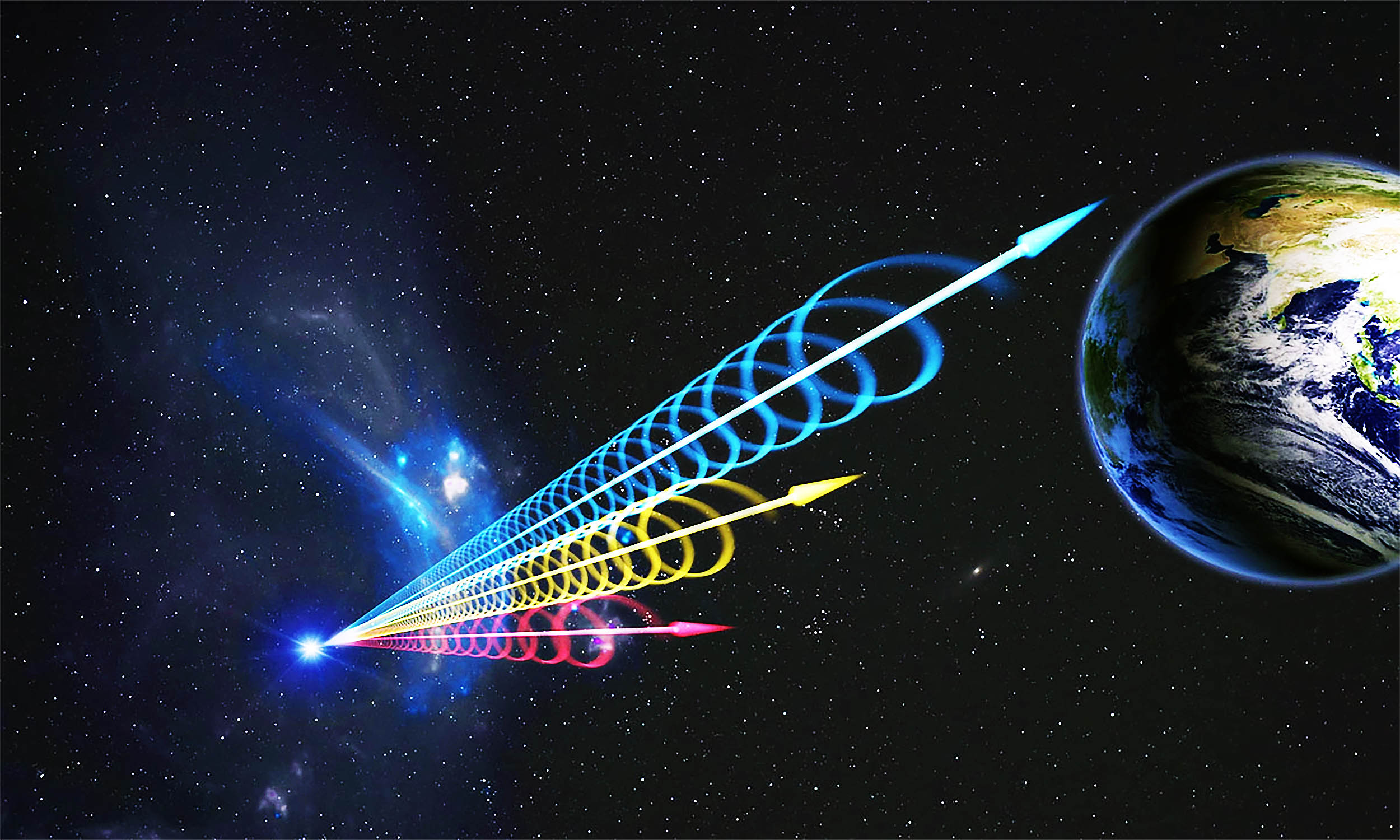4 light years in 20 years. This beast be flying at a fifth of light speed.
TL;DR
Researchers are working on a new solar sail spacecraft, which could travel at 20% the speed of light and reach Alpha Centauri in just 20 years. The sail, using ultra-thin materials and lasers, can withstand intense forces and heat during the journey. The sail’s design, which inflates like a parachute, provides resilience against the tearing forces caused by rapid acceleration, reducing the risk of damage during the voyage. This project, part of the Breakthrough Starshot initiative, is advancing interstellar travel beyond the limitations of conventional rockets.
Don’t forget to join the discussion below!
_______
Space is vast—extremely, incredibly vast. That’s why NASA has no immediate plans to send spacecraft to the many known planets outside our solar system. However, if a mission were to be considered, Alpha Centauri would be the prime target, as it’s the closest star system to our sun, located 4.3 light-years away. So, how quickly could we reach Alpha Centauri? Could we make it to the nearest stars in a reasonable timeframe? A new solar sail spacecraft, designed to be more resilient, might provide part of the solution.

Could there be a new way to travel to Alpha Centauri? Traditional rockets aren’t suitable for interstellar travel since they are far too slow. But in February 2022, researchers from Penn Engineering and the Breakthrough Starshot initiative announced they were working on a new way to travel to the closest star system.
Their new proposal involves a stronger, more durable solar sail. If successful, this spacecraft could reach Alpha Centauri in as little as 20 years. The researchers have detailed their concept in two new peer-reviewed studies. These papers were published by ACS Publications on December 23, 2021, and January 11, 2022.
The Breakthrough Starshot initiative started with a 2016 announcement by Russian billionaire Yuri Milner, who is heavily invested in high-tech projects. Milner launched an ambitious effort called Breakthrough Starshot, pledging $100 million toward proof-of-concept studies for a revolutionary new approach to star travel. The goal was to achieve 20% of the speed of light, potentially reaching Alpha Centauri and its planets, Proxima b and Proxima c, within 20 years.
But is this idea even feasible? Researchers have been exploring whether it could actually work.
A solar sail spacecraft could theoretically work for star travel, but in reality, the sail needs to withstand the long journey to Alpha Centauri. The new research focuses on creating a stronger, more resilient solar sail. Igor Bargatin from Penn Engineering explained:
To reach another star within our lifetime, we need to approach relativistic speeds—those near the speed of light. The concept of a light sail has been around for a while, but we are only now figuring out how to make these designs robust enough to survive the trip.
The proposed probe would be incredibly small, roughly the size of a microchip. The sail would be about 10 feet wide (3 meters) and incredibly thin—1,000 times thinner than a sheet of paper. It would be made from ultra-thin layers of aluminum oxide and molybdenum disulfide.
Using lasers, the researchers claim this tiny probe could travel at up to 1/5 the speed of light, which would be fast enough to reach Alpha Centauri in 20 years.
Previous solar sails relied solely on sunlight for propulsion. In contrast, the new design from Starshot would use ground-based lasers to accelerate the sail to much higher speeds. The intensity of the light would be millions of times stronger than sunlight alone.
However, for this to work, the sail must be able to resist tearing or melting from the intense forces.
One proposed solution, discussed in the first paper, is to have the sail puff out like a parachute rather than staying flat. The sail would be as deep as it is wide, allowing it to handle the extreme forces of acceleration, which would be thousands of times greater than Earth’s gravity.
The idea is that a very tight sail—whether on a boat or in space—is more likely to tear. While the concept is relatively simple to understand, we needed to perform complex mathematical calculations to predict how these materials would behave at such a small scale. – Bargatin explained
Matthew Campbell, the lead author of the first paper, added:
Laser photons will inflate the sail similarly to how air inflates a beach ball. We know that lightweight, pressurized containers—like propane or rocket fuel tanks—are typically spherical or cylindrical to prevent tearing or cracking.
The second paper focuses on how to prevent the sail from overheating due to the laser’s heat. The solution, according to the researchers, lies in nanoscale patterning, which is part of a process called nanolithography. Nanolithography involves creating microscopic patterns or structures by imprinting, writing, or etching. – Aaswath Raman from UCLA explained
If the sail absorbs even a small amount of the laser’s energy, it will heat up significantly. To prevent it from disintegrating, we need to maximize its ability to radiate heat, which is the only way heat can be transferred in space.
To increase the sail’s ability to radiate heat, previous designs incorporated photonic crystals—holes in the sail’s material that helped disperse heat. Now, the new study suggests a more effective design by weaving sections of the sail into a grid pattern.
This approach makes the sail more resistant to tearing and melting. The spacing of the holes and fabric swatches aligns with the wavelengths of both the light and heat. As a result, the sail can better handle the laser’s initial thrust, reducing the time the lasers need to stay focused on the sail.
Although this technology sounds promising, traditional rockets are not suitable for interstellar travel.
Consider the Space Shuttles, which only traveled a few hundred kilometers above Earth’s surface. On a scale where Earth is the size of a grain of sand, this distance is minuscule compared to the 6 miles (10 kilometers) to Alpha Centauri.
While space shuttles weren’t meant for interstellar travel, we have sent some spacecraft out of the solar system. Five human-made probes are now heading into interstellar space: the two Pioneer spacecraft, the two Voyager spacecraft, and the New Horizons probe. But these are moving far too slowly to reach other stars in a reasonable timeframe.

Take the two Voyager probes, launched in 1977. Even if one of them were aimed at Alpha Centauri, at their current speed, it would take tens of thousands of years to reach it. Voyager 1 will pass within 1.6 light-years of another star, AC+79 3888, in about 40,000 years. Similarly, Voyager 2 will pass 4.3 light-years from Sirius, the brightest star in the sky, in around 296,000 years.
The New Horizons spacecraft, which visited Pluto, travels at 36,373 miles per hour (58,536 kph). Although it reached Pluto in 9.5 years, it would take about 78,000 years to reach Alpha Centauri.
In other words, conventional rockets are simply too slow for interstellar missions.
What if we could travel faster than light? Many science fiction stories revolve around this idea, but it poses significant challenges to our current understanding of physics. However, Harold “Sonny” White from NASA’s Advanced Propulsion Team has claimed to have made discoveries that bring the concept of faster-than-light travel—via the Alcubierre warp drive—closer to reality.
The warp drive idea, first suggested by Mexican physicist Miguel Alcubierre in 1994, proposes that faster-than-light travel could be achieved by bending spacetime. White continues to explore these highly speculative but exciting ideas. You can even find faster-than-light spacecraft designs from 2014 on a Flickr page dedicated to the concept.
Looking ahead, the researchers plan to keep testing their new solar sail design. Deep Jariwala from Penn Engineering said:
Just a few years ago, working on this type of concept would have seemed far-fetched. Now, we not only have a feasible design, but it’s also based on materials available in our labs. Our next steps are to build small-scale versions of these structures and test them with high-powered lasers.





important to note, even if the sails work exactly as described, it would mean that a probe could fly PAST alpha centauri, after 20 years of travel… It wouldn’t mean that after 20 years we could start receiving lots of good science… We’d need a way to slow and redirect the object. We don’t currently have that tech. Maybe at some point they’ll device hydrogen collectors, so fuel to burn and slow such a probe, can be gathered on the way out.. (if that would provide enough fuel)… In any case, with a TOP speed of 20% light speed, and NEEDING to slow down, halfway through the journey (or so), it’d actually take more than 40 years to safely arrive in alpha centauri system, and actually attempt any real science…